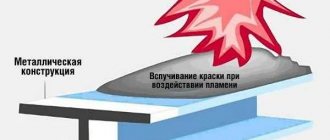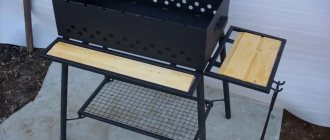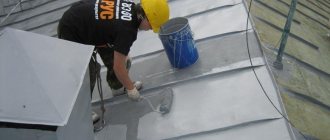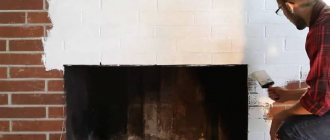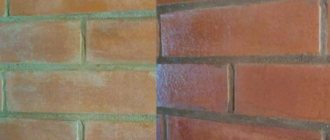When repairing or building, you will always need materials and paint. Paint can vary in composition and purpose.
If you need to process and paint metal, acrylic paint for metal is suitable. This type of material is very popular among the population due to its positive features.
Namely:
- protects metal from corrosion;
- has a longer service life, hence the rather high price (when compared with conventional materials);
- excellent adhesion to surfaces made of steel, zinc, aluminum, copper, brass and lead;
- suitable for carrying out work not only on the facades of buildings, fences, but also for interior work in the apartment;
- can be used both as an independent coating and as an additional means during restoration work on buildings and structures.
General properties
Acrylic enamel for metal has a water-dispersed base made from polymers. The final composition depends on the type of mixture. One of the important properties is resistance to wet environments. Therefore, the composition can be used in bathrooms and kitchens where there is an increased level of moisture.
Acrylic enamel for metal has a water-dispersed base made from polymers.
Types of paints and varnishes
The composition of paints and varnishes includes binders, fillers, pigments, solvents/thinners and additives. In order to competently use paint and varnish materials during repairs, you need to know exactly their composition.
Main components
Oil paints based on drying oil.
All paints are divided according to the type of binder used and the type of solvent.
- The binder determines the main qualities of the paint, the service life of the coating and the speed of its drying. There are 4 common types of binders used for paints and varnishes: alkyd and epoxy resins, oil-based (on drying oil), latex, acrylic polymers.
- Solvent components are divided into solvents themselves and diluents. The former reduce the fluidity and viscosity of the material. Thinners only reduce the viscosity of the paint.
- To improve the characteristics of paints and varnishes, additives are added to their composition: stabilizers, emulsifiers, fungicides, antiseptics, etc.
- Special paints belong to a separate category. These are anti-corrosion coatings, for example, Zinga electrically conductive paint. Analogs with antiseptic properties that protect the base from mold and rot. Compositions for removing small defects (irregularities, scratches, cracks), etc.
Oil and enamel compositions
The photo shows acrylic enamel.
Materials based on alkyd and acrylic resins include oil and enamel paints.
They are suitable for painting metal, wood and plastered surfaces.
After drying, they are non-toxic, light and moisture resistant.
- Oil paints are produced on the basis of drying oil. White Spirit, gasoline, turpentine or solvent naphtha are used as diluents. The compositions are not expensive, but they take a long time (up to several days) to dry. The main disadvantage is that over time the coating turns yellow.
- Varnish is added to enamel compositions as a binder. It gives the coating gloss and aesthetics. The instructions recommend using such paints for external and internal finishing work on metal, wood, concrete, and plaster.
Enamels are moisture and light resistant. They also have anti-corrosion resistance.
Emulsion and dispersion materials
Water-dispersed composition.
Such paints are diluted, but not soluble with water. In them, the binder and pigment particles are distributed in a liquid medium, creating a stable emulsion.
When the coating dries, it is not washed away by water.
- Emulsion compositions are economical, environmentally friendly and fire safe.
- They fit well on almost any substrate.
- They dry quickly and do not have a pungent odor.
Many people think that water-based and water-dispersion compositions are the same.
However, they are different.
- Matte emulsions wash off over time. The dispersions are waterproof and suitable for use in damp areas.
- Water-dispersion compositions are usually white; water-based analogues have a variety of colors.
- Dispersions cannot be used at temperatures below +5 degrees. However, with the addition of modifiers, they are thermally stable. Such, for example, are fire-retardant paints for metal Polistil.
- Such compositions are frost-resistant after they are completely dry.
- They are vapor permeable.
- Suitable for alkaline substrates (concrete, plaster).
- These paints are tinted very well.
- Resistant to ultraviolet radiation, retains its original color for a long time.
- They have the ability to repel water.
- They have high mechanical stability.
Peculiarities
Acrylic paint for metals is the market leader for this type of surface. Its cost is higher when compared with analogues. But it has a good level of adhesion to a metal base.
Compared to analogues, this type of paintwork material has a long service life. The composition is durable and is able to retain its properties even under difficult operating conditions.
When the temperature changes, the already dried composition does not spread. The layer remains smooth, maintaining its decorative characteristics.
The composition is durable and is able to retain its properties even under difficult operating conditions.
Metal priming process.
After the metal surface is cleaned, you can proceed to priming. This will be good protection from adverse external influences and from the spread of rust.
Just as in the case of choosing a paint: first read the instructions - for what purpose this or that primer is intended. In general, if a ferrous metal surface is being processed, then the primer must have a reliable anti-corrosion coating , and for non-ferrous metals, check the adhesion strength of the primer.
Specifications
Water-based paint for metal can be used not only for interior decoration, but also exterior. It is safe for human health and environmentally friendly. Its characteristics and properties allow it to be used in difficult conditions.
Such coatings can withstand the influence of direct sunlight, high humidity, and various weather conditions. The coating is also vapor-tight and wear-resistant. Suitable for cladding not only metal bases, but also wood and concrete.
The basis of the composition is water. When the layer is applied, it evaporates from the surface. All that remains is a smooth, durable film. Due to the absence of a strong odor, acrylic paint is excellent for use at home.
In addition to a standard brush, you can use a roller or a special spray gun to coat the metal. In the first case, this improves the quality of painting. The spray gun uses paintwork materials economically, which allows you to reduce consumption.
Such coatings can withstand the influence of direct sunlight, high humidity, and various weather conditions.
Is it possible to paint wood with acrylic paint?
Acrylic painting on wood is quite popular. The peculiarity of acrylic paints is that they are easily washed off with water during use and form a durable film after drying. It is resistant to moisture and aggressive influences. The wooden surface under the acrylic coating can “breathe” and is also protected from pests thanks to it.
Advantages and disadvantages
Any facing material has advantages and disadvantages. They must be taken into account in order to prevent possible problems and select the most suitable coating for specific operating conditions.
Among the advantages of acrylic mixtures it is worth noting:
- Wear resistance and durability. If improperly processed and cladding, metal bases quickly deteriorate and become covered with rust. The acrylic composition allows you to protect the surface from corrosion for up to 10 years;
- No regular updates required. The paint can retain its original appearance for many years;
- The white coating does not turn yellow over time and will not fade;
- Ability to withstand difficult operating conditions. This applies to temperature changes, high humidity levels, and constant exposure to sunlight. The factors described do not impair the performance or appearance of the paint. Also, when used as external cladding, the coating withstands snow, rain and other weather conditions;
- Safety. The composition does not contain toxic substances. Therefore, it can not only be used for painting pipes and gas storage facilities, but also any room in the house. No pungent smell. Harmless in contact with skin;
- Withstands high temperatures. Able to retain their properties even at 120 degrees. Some types contain special silicate resins that allow them to withstand higher temperatures.
The acrylic composition allows you to protect the surface from corrosion for up to 10 years.
In addition to the positive aspects, acrylic compositions have disadvantages. Among them:
- Drying time. Manufacturers claim that the coating dries quickly. However, it will take up to a month for the paint to dry completely and form a high-quality layer. This is how long the formed film will remain vulnerable to various influences and damage;
- Limited palette of shades. Other types of coatings have a wider selection of colors. But if you managed to choose the right tone, then this minus can be eliminated;
- Price. It was noted that compared to analogues, the price of this paint is higher.
It will take up to a month for the paint to dry completely and form a high-quality layer.
Flaws
Acrylic coating has its disadvantages:
- long time for complete drying. The top layer dries first. The final formation of a dense film of acrylic coating occurs after a month. This suggests that for a month it is necessary to protect the applied acrylic from deformation, as well as contamination;
- unlike other paints, the acrylic mixture is inferior in color range and brightness;
- the cost of such mixtures is higher than conventional paints;
- do not withstand extreme cold in winter well enough.
For your information! The dimness of acrylic mixtures will not be reflected in any way during outdoor work.
What to consider when choosing
When choosing a composition, you need to focus on the conditions in which it will be used. What matters is the external or internal finish, the conditions under which the composition is planned to be used. Next, you need to find out the area to be painted and the number of planned layers. The choice of a suitable tool for applying the composition and the amount of paint depend on this. It is recommended to purchase material in reserve.
You should choose paintwork materials from proven manufacturers who have managed to establish themselves on the positive side in the market. Be sure to check the expiration date before purchasing. It is recommended to discard the material if it is about to deteriorate.
When choosing a composition, you need to focus on the conditions in which it will be used.
Preparing the metal for painting.
First of all, you need to prepare the metal for painting . If this is not done, then the result of the work will not be satisfactory. Preparation, in this case, means removing from the metal everything that has accidentally stuck to it, etc.
First you need to remove all debris (this is usually the easiest). Then, if there is rust or remnants of old paint, they also need to be removed. It is better to use tools such as:
- scraper;
- sandpaper or wire brush.
Even a sponge that is used when washing dishes is suitable for these purposes. After thorough washing, there should be no oil or grease stains, and generally no dirt or dust left. A soap solution is suitable for this, but it is better not to use abrasives. After the excess has been wiped off, rinse the metal again with clean water. Wait until it dries.
If you have to paint something massive, the described cleaning process may take too long. In this case, an oxy-acetylene torch will help. Under the influence of its flame, the old paint will burn off, and rust and scale will disappear.
Technology of application to a metal surface
The metal surface is cleaned of traces of corrosion using a special brush or rust converter. You can refuse to use a primer. But it is necessary to clean the base from traces of grease and dust. Additionally, everything is dried.
After opening the paint, its top layer is drained and then stirred. The temperature when applying paintwork materials should be from +5 degrees. The surface begins to be coated with paint using a suitable tool. Both a standard brush and a spray gun or roller will do. For metal, about 2-3 layers are suitable.
Each subsequent layer must be applied only after the previous one has dried. When the paintwork is completely applied, you just have to wait until it dries completely.
Each subsequent layer must be applied only after the previous one has dried.
Acrylic paint has many advantages and is suitable for treating metal surfaces. It's convenient to work with her. It is durable and resistant. Able to withstand difficult operating conditions. The main thing is to take into account some features of the composition before use. Then the coating will be of high quality and durable.
Preparing for painting
Before you paint metal with well-chosen acrylic paint, you should prepare it.
Visually assess the condition of the outer or inner surface to be painted. If traces of corrosion are found, they are cleaned off with a wire brush. You can use a rust converter. Remove peeling areas of old paint. They are carefully cleaned and polished to achieve a smooth surface without dents or bumps. If necessary, remove existing contaminants using detergent compounds. Treated with degreasing agents. Industrial all-purpose degreasers or white spirit are suitable for this purpose. If small elements are being prepared, use medical alcohol.
There is no need to apply a primer on cleaned metal surfaces, although its presence reduces the consumption of acrylic paints and improves the quality of the future coating. The primer composition is applied an hour after completion of the degreasing operation.
For ferrous metals, a primer is selected, which, according to its technical characteristics, will serve as an additional barrier that prevents the formation of corrosion. If non-ferrous metal surfaces are primed, the key criterion is to ensure the best adhesion.
An oxygen-acetylene torch will help you clean a large metal surface quickly and efficiently. When exposed to flame, the old paint coating burns out completely. At the same time, the rust peels off.
